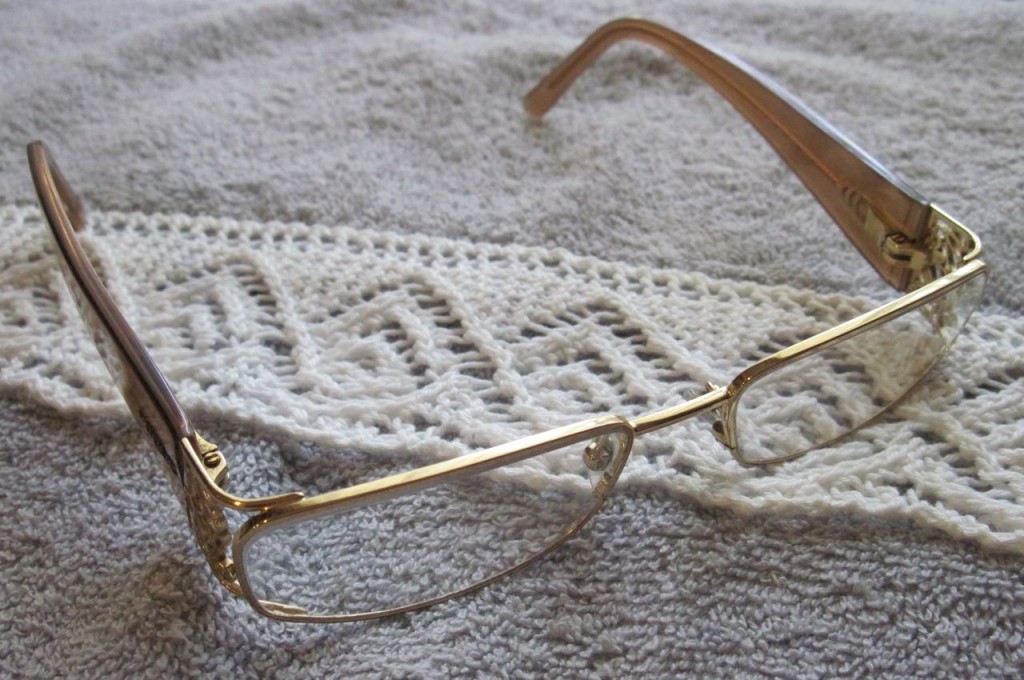Are you a product or process knitter? I bet that most (all?) of us are some of both.
Our Goals
A pleasing result (product) — A satisfying knitting experience (process)
To achieve these goals, here is a quick list of some tips to keep in mind.
Getting up to speed
- Try least complicated instructions first — HAVE FUN!
e.g. narrow edgings (like we have started out with)
e.g. alternate rows are (mostly) plain knit or purl
- Use a heavier thread and larger needles first for practice and to see what is happening
Avoiding mistakes
As we start to get into lace edgings with more stitches and rows per repeat, it helps to keep in mind some things that can help us prevent mistakes (or at least minimize the chances of them happening).
- Enlarge or re-write instructions, if necessary, so they are easy to see/understand in terminology that is familiar to you
e.g. write out row-by-row instructions on flippable index cards
e.g. if using charts (we will cover these later), enlarge charts or re-write in symbols familiar to you
- Use methods like stickies, checkmarks, row counters, magnetic strips or highlighter to help keep your place
- VERY important! good working conditions
e.g. good lighting and contrast
e.g. magnification if necessary
e.g. minimal distractions
e.g. avoid knitting when you are tired
- Check your work often
e.g. count stitches after completing row (easier to correct sooner than later — we will talk more about remedying mistakes if they happen in Part 2)
e.g. visually check your knitting for reasonability
Do you have questions on any of this or need me to expand on any of the points? Much of this is applicable to knitting in general, so I expect that most is not new. But I feel it is important enough to at least mention the key points.
If there are any questions or you need me to expand on any of the points, just let me know. I don’t want to get side-tracked or bogged down in too much detail that is not needed by anyone, but on the other hand, I want to make sure you are getting the help you need to get a satisfying knitting experience and a pleasing result.



 HeartStrings FiberArts
HeartStrings FiberArts Knitting Bits of Lace on Facebook
Knitting Bits of Lace on Facebook Ravelry Store
Ravelry Store
I like stitch markers and use them alot, counting previous stitches everytime i come to one. In a complex pattern or large project, i count stitches at the end of every row and/or at the center point, as on a shawl. That way i never rip out because i’ve checked every row as i go and maintain my momentum forward.
I have a terrible time correcting mistakes when knitting lace. The yo and k2tog, etc, are mind boggling to me when trying to correct a mistake.
Thanks for the help.
oh yeah…..
Knitting lace when tired or when distracted by kids, pets, the TV, or a movie can be disastrous! Ask me how I know 🙂
Pingback: Striving for Perfect Results - Part 2 | Knit HeartStrings
I certainly agree with not knitting when tired. I like to knit in bed, but I have found some disasters the next morning when I had fallen asleep, but kept knitting. It was never more than a coule of rows, but that is enough- oh my land!
You didn’t mention “lifelines.” I find that lifelines are an invaluable tool when knitting lace. They are the ultimate place marker. This might be a worthy topic to discuss in a future post.
I am both a process and product knitter. The process is soothing and the product is rewarding.
Happy lace knitting!
Lifelines are in Part 2 of Striving for Perfect Results (next weekend’s Tips & Tutorials)!